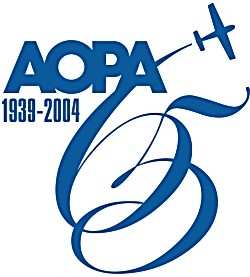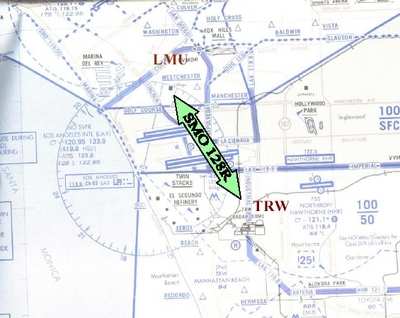 To hear the AOPA tell it, some
amendments are in order for the FAA's "Flight Plan" -- the agency's
strategic priorities through 2008. AOPA executives say they want a
few more waypoints added for general aviation.
To hear the AOPA tell it, some
amendments are in order for the FAA's "Flight Plan" -- the agency's
strategic priorities through 2008. AOPA executives say they want a
few more waypoints added for general aviation.
Specifically, AOPA is calling for more emphasis on improvements
to general aviation airports and better GA access to terminal
airspace. And the association wants the FAA to be a stronger
advocate on behalf of general aviation when it comes to security
agencies restricting airspace access.
"One of our top member priorities is preserving and protecting
airports," AOPA President Phil Boyer wrote FAA Administrator Marion
Blakey. He complimented the administrator on the agency's
enforcement of rules that keep airports open to all users, and he
noted that the Flight Plan incorporated an AOPA-endorsed proposal
to use Airport Improvement Program (AIP) funds to improve reliever
and secondary airports near major metropolitan areas.
Boyer said the FAA should devote more funding to adding
instrument approaches to GA airports.
"As we recently discussed in person, AOPA believes that the FAA
must include modernizing airports with precision instrument
approach surveys, approach lighting, and precision runway markings
to accommodate Wide Area Augmentation System (WAAS) approaches,"
Boyer told Blakey. "AOPA has long advocated for WAAS because it
increases all-weather access for general aviation."
Access to airspace is another part of the FAA plan that needs
improvement, according to AOPA.
Boyer noted that the current plan removed provisions for
enhanced VFR access to metropolitan areas and other constrained
airspace.
"I am concerned that this year's Flight Plan actually removes
[this] strategy," Boyer said. "General aviation pilots use aircraft
to access major metropolitan areas in the United States.... The FAA
must provide better access to air traffic services in terminal
areas, especially in and around Class B airspace." He said that
using GPS-defined routes through busy airspace could improve safety
and access for general aviation.

He called on the FAA to do a better job of providing advanced
notice of airspace restrictions. "I realize this may require reform
of the system used to disseminate critical information, the Notice
to Airmen (NOTAM) system. The GA community relies solely on the FAA
for the timely and accurate dissemination of this information."
On the larger issue of airspace restrictions, Boyer asked the
FAA to take a stronger role in educating security agencies about
the consequences of restricting airspace. "A tremendous
responsibility falls on the agency to educate those focused on
homeland security on the impact of security-related airspace
actions," he told Blakey.
Finally, on the subject of general aviation safety, Boyer
encouraged the FAA to draw on industry resources, particularly the
AOPA Air Safety Foundation.
Air Safety Foundation Executive Director Bruce Landsberg
recently took the leadership of the government/industry Joint
Steering Committee (JSC) for safer skies. "As you begin to develop
and baseline a target accident rate for general aviation, we
encourage you to use the JSC partnership," Boyer wrote. "This
ensures your proposed baseline will align with the ongoing analysis
already being conducted by the industry."
FMI: AOPA Letter To FAA
 ANN's Daily Aero-Linx (05.06.25)
ANN's Daily Aero-Linx (05.06.25) ANN's Daily Aero-Term (05.06.25): Ultrahigh Frequency (UHF)
ANN's Daily Aero-Term (05.06.25): Ultrahigh Frequency (UHF) ANN FAQ: Q&A 101
ANN FAQ: Q&A 101 Classic Aero-TV: Virtual Reality Painting--PPG Leverages Technology for Training
Classic Aero-TV: Virtual Reality Painting--PPG Leverages Technology for Training Airborne 05.02.25: Joby Crewed Milestone, Diamond Club, Canadian Pilot Insurance
Airborne 05.02.25: Joby Crewed Milestone, Diamond Club, Canadian Pilot Insurance




